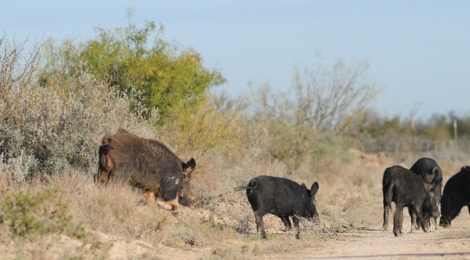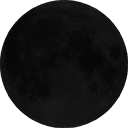
Hogs Are Here To Stay
Though environmentally detrimental, wild swine satisfy the demand for hunting opportunities, provide an economic asset, while controlling their numbers.
Story and Photography by Bob Zaiglin
As my hunter and I worked our way to the edge of a 20-acre oats patch, I was hoping to see a 170 inch caliber buck I had observed feeding on the succulent grain only a week earlier. It was a comfortably cool mid-December afternoon, and we were on a huge spread located in the heart of the Golden Triangle — Dimmit County. Stealthily approaching the grain field, we used the maze of blackbrush and guajillo to break our outline from its visitors. We were focused on deer and deer only, hoping to catch a glimpse, if not harvest, the tall 10-point I was confident frequented the field.
Only yards from the field we were forced to crawl on our hands and knees over a mine field of sticker burrs until we arrived at the edge. Upon our arrival, several bucks scoring in the mid 150’s, along with several doe, were engulfing the verdant grain, but the buck we were after was nowhere to be seen. We then got comfortable as I remained confident the big 10 would show up before dark.
As additional deer entered the field, the anticipation of the larger buck’s arrival escalated, but the appearance of a hog on the extreme northwest portion of the field stole the show. It was the largest bodied hog I had ever seen on the ranch, and complemented by a large set of ivory-white cutters, it was a sight to behold.







